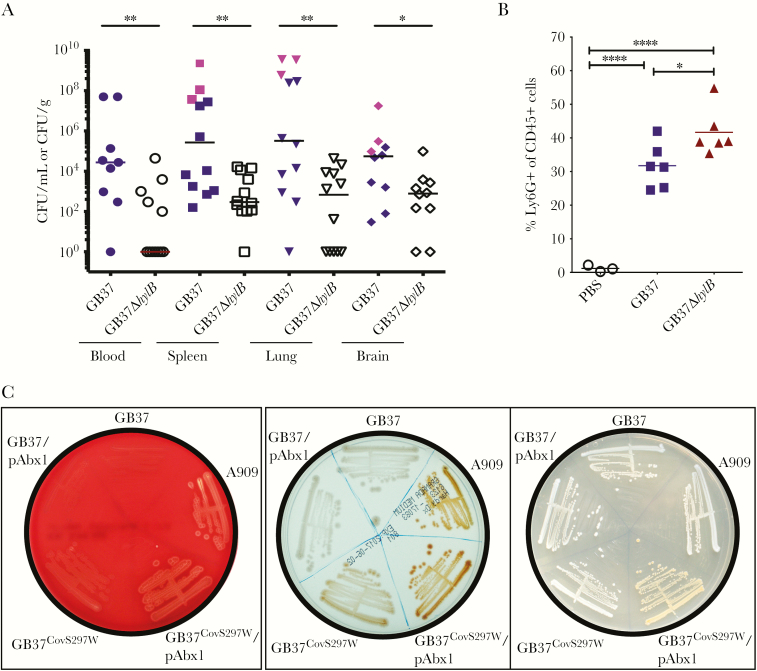Figure 2.
Hyaluronidase activity promotes GB37 virulence, and a CovS W297L substitution in GB37 contributes to the decreased hemolysis and increased hyaluronidase activity. (A) Twelve, 6- to 8-week-old wild-type (WT) C57BL/6J mice were given intraperitoneal (IP) injections with ~1 × 107 colony-forming units (CFU) of either GB37 or GB37ΔhylB. At approximately 48 hours postinfection, blood, spleens, lungs, and brains were harvested from the infected mice and CFU were enumerated. Pink symbols for GB37 indicate mice that succumbed to the infection within 48 hours. Note that mice infected with GB37 have increased CFU compared with GB37ΔhylB. *, P < .05 and **, P < .01, Mann-Whitney test. (B) Wild-type C57BL/6J mice were infected IP with ~108 CFU of GB37, GB37∆hylB (n = 6/group), or phosphate-buffered saline ([PBS] n = 3/group). At 2 hours postinfection, peritoneal fluids were collected and peritoneal cells were stained with antibodies for neutrophils markers (CD45+Ly6G+) and analyzed using flow cytometry. ****, P < .0001 and *, P < .05, Sidak’s multiple comparison test after analysis of variance. (C) Group B streptococci strains on red blood agar, Granada Media, and tryptic soy agar. Introduction of Abx1 into GB37 (GB37/pAbx1) did not restore hemolysis or pigment expression. Correction of the CovS substitution back to WT, ie, GB37CovS297W restored hemolysis and pigmentation, which was enhanced when Abx1 was present (compare GB37CovS297W with GB37CovS297W/pAbx1).

